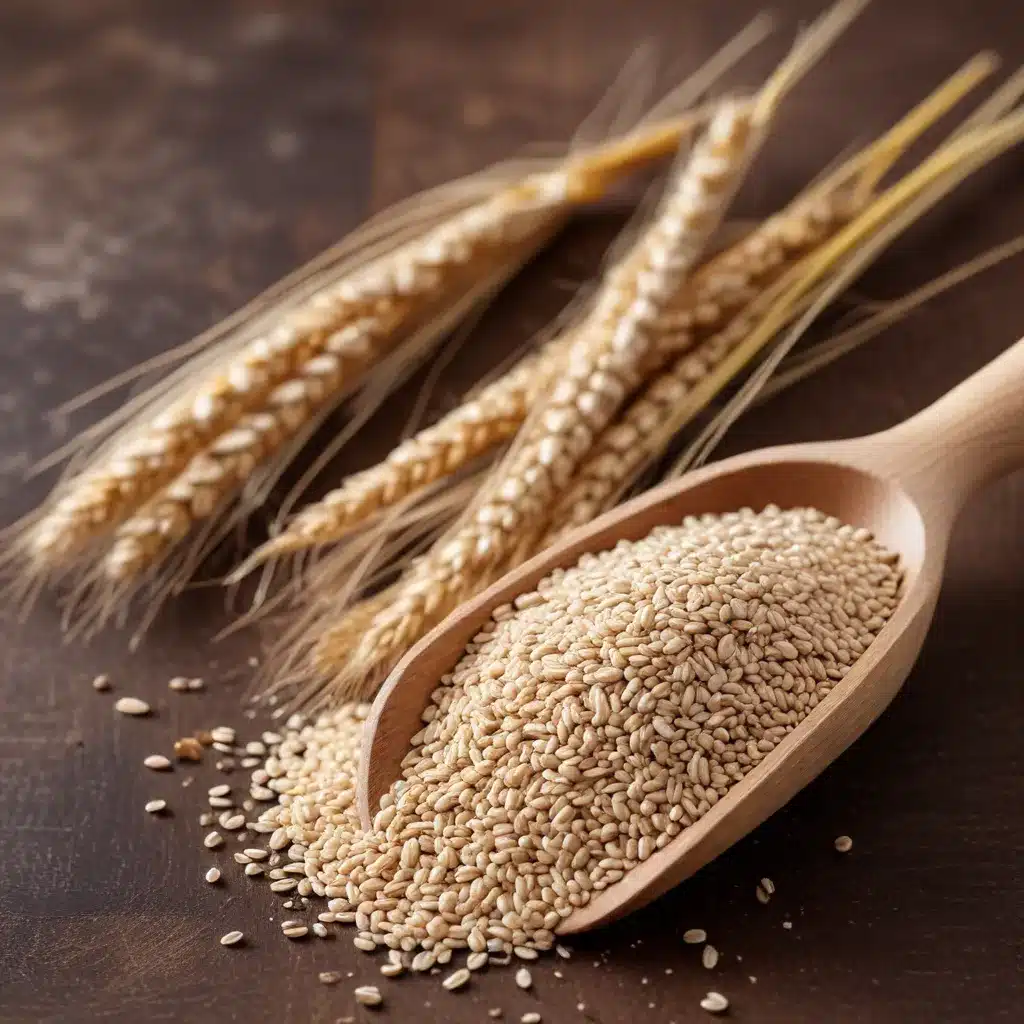
Rediscovering the Power of Overlooked Grains
In an age where food trends come and go, it’s easy to overlook the untapped potential of certain grains that have long been relegated to the sidelines. However, as we face the challenges of a growing population, changing climate, and the need for more sustainable and nutritious food options, it’s time to shine a spotlight on these underutilized grains.
From ancient heritage varieties to modern innovations, these grains hold the key to unlocking a world of culinary possibilities. By exploring their unique properties, versatile applications, and impressive nutritional profiles, we can expand the boundaries of what’s possible in the kitchen and contribute to a more resilient and diverse food system.
Sorghum: The Overlooked Superfood Grain
One such grain that deserves a closer look is sorghum. Often overshadowed by its more popular cereal counterparts, such as wheat, rice, and corn, sorghum has quietly been making a comeback in the culinary sphere. This ancient grain has a lot to offer, and it’s time to uncover its true potential.
Nutritional Powerhouse: Sorghum is a nutrient-dense grain that boasts an impressive array of benefits. It’s high in slowly digestible and resistant starch components, which can help regulate blood sugar levels and potentially promote feelings of fullness. Additionally, sorghum is uniquely rich in diverse bioactive polyphenols and other beneficial compounds that are associated with reduced risk of chronic diseases, including type 2 diabetes, cardiovascular disease, and certain types of cancer.
Climate Resilience: As the global climate continues to shift, the importance of crops that can thrive in adverse conditions becomes increasingly critical. Sorghum is known for its remarkable resilience to water scarcity and elevated temperatures, performing relatively well compared to other major cereal crops like wheat, rice, and corn. This makes sorghum a valuable asset in the fight against the challenges posed by climate change.
Culinary Versatility: Despite its impressive nutritional and environmental credentials, sorghum has historically been underutilized in the culinary world. However, with the growing interest in ancient grains and the demand for healthier, more sustainable food options, sorghum is starting to capture the attention of chefs and home cooks alike.
Sorghum can be used in a wide variety of dishes, from fluffy pilafs and hearty stews to crunchy snacks and even gluten-free baked goods. Its subtle, earthy flavor profile lends itself well to both savory and sweet preparations, allowing it to seamlessly integrate into diverse culinary traditions.
Unlocking Sorghum’s Full Potential
While sorghum holds tremendous promise, there have been some challenges associated with its widespread adoption in the food industry. One of the key hurdles has been its lower endosperm functionality and relatively low protein digestibility, which are linked to the tendency of the sorghum endosperm protein, known as kafirin, to cross-link during processing.
However, recent advancements in the utilization of traditional genetics to alter the structure and functionality of the kafirin protein have shown promising results. These improved sorghum lines have demonstrated enhanced food use quality and protein digestibility, unlocking a whole new realm of culinary possibilities.
By understanding and addressing these technical challenges, food scientists and culinary professionals can work together to fully harness the potential of sorghum. This collaboration can lead to the development of innovative sorghum-based ingredients, recipes, and food products that cater to the growing demand for healthier, more sustainable, and diverse food options.
Exploring the Wider Landscape of Underutilized Grains
While sorghum serves as a prime example, it is just one grain in the vast and diverse landscape of underutilized and overlooked cereal crops. These grains hold tremendous potential to contribute to a more resilient and nutritious food system, and they deserve our attention and culinary exploration.
Crops such as quinoa, millet, teff, buckwheat, and even ancient wheat varieties like spelt and einkorn, offer a wealth of untapped culinary potential. Each of these grains boasts its own unique flavor profiles, nutritional benefits, and adaptability to various growing conditions.
By embracing the diversity of these underutilized grains, we can not only expand our culinary horizons but also support the livelihoods of farmers, producers, and communities who have long been cultivating these heritage crops. Moreover, the incorporation of these grains into our diets can contribute to a more sustainable and equitable food system, addressing issues of food security and nutrition-related health challenges.
Harnessing the Power of Collaboration
Unlocking the full culinary potential of underutilized grains requires a collaborative effort between various stakeholders, including food scientists, plant breeders, culinary professionals, and consumers.
Researchers at the University of Minnesota’s Plant Protein Innovation Center (PPIC) are leading the charge in this regard. By combining their expertise in food science, nutrition, and plant genetics, they are working to overcome the technical challenges associated with the use of these grains in food applications and develop innovative, high-quality ingredients and products.
Through their collaborative efforts, the PPIC team is exploring ways to enhance the functionality, nutritional profile, and sensory appeal of underutilized grains, paving the way for their broader acceptance and integration into the culinary landscape.
Embracing the Future of Diverse Grains
As we navigate the complex challenges of the 21st century, the rediscovery and revitalization of underutilized grains offer a glimmer of hope. By embracing this untapped culinary potential, we can not only expand our gastronomic horizons but also contribute to a more sustainable, resilient, and equitable food system.
Through continued research, innovation, and collaboration between food scientists, culinary professionals, and passionate consumers, we can unlock the true power of these overlooked grains. By incorporating them into our diets, we can nourish our bodies, support local communities, and pave the way for a future where diversity, nutrition, and sustainability are at the heart of our food choices.
So, let us embark on a journey of culinary exploration, where the forgotten grains of the past become the treasures that shape the food landscape of tomorrow. The time is now to rediscover, rethink, and reimagine the culinary potential of underutilized grains.


